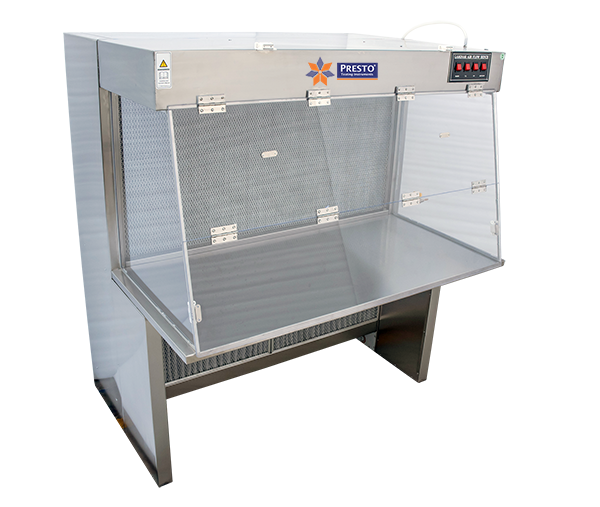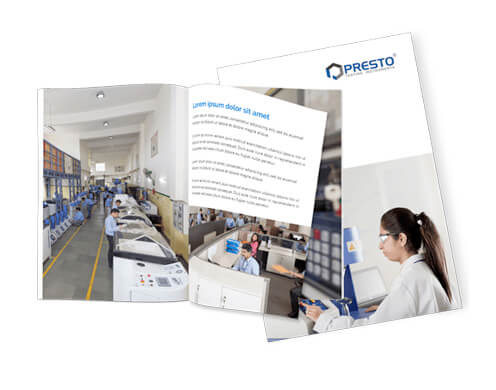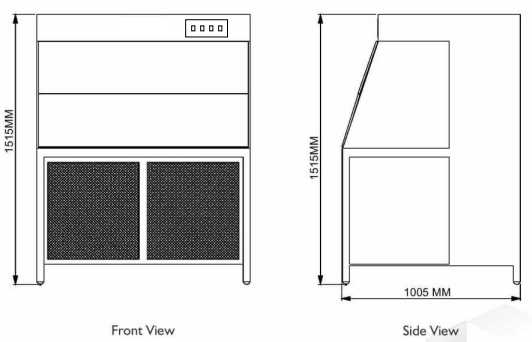What is Laminar Air Flow? Working Principle, Diagram & Applications Explained

Gaurav Malhotra-Testing Instrument Expert
13-06-2025
Have you ever wondered how labs and hospitals stay so clean and germ-free? The secret hero behind it is Laminar Air Flow. It's a powerful system that creates ultra-clean environments, especially in places like microbiology labs, pharmaceutical industries, and electronics workshops where precision is everything.
In this blog, we’ll explain everything in simple terms:
- What is the principle of Laminar Air Flow
- How it actually works
- The different types of Laminar Air Flow
- A clear diagram to help you visualize the process
- And its amazing applications in various fields
Plus, we’ll also talk about the Laminar Air Flow Cabinet price and share some of the top manufacturers in India you can trust.
So, let’s begin this smart and spotless journey into the world of clean air technology!
What Exactly is Laminar Air Flow?
Imagine air moving in one straight direction, just like water flows smoothly in a calm river. There is no mixing, no swirling—only clean and steady flow. This is called laminar air flow. The word “laminar” means “in layers,” so the air moves in straight, parallel lines without any disturbance.
A special filter called HEPA filter (High-Efficiency Particulate Air) is used to clean the air. It removes 99.97% of very small particles, even things like dust, bacteria, and viruses. This clean air is blown inside a machine called a laminar air flow cabinet, also known as a clean bench.
This cabinet works like a small clean room. People use it for important tasks like growing bacteria in labs or making medicines. It helps keep the workspace free from germs and dust.
How Does Laminar Air Flow Work?
The laminar air flow principle is simple but clever. Air is sucked into the system through a pre-filter that grabs bigger particles (like dust bunnies). Then, it passes through the HEPA filter, which is like a super-fine net that catches almost all the tiny germs and particles. A fan keeps the air moving at a steady speed—usually about 0.3 to 0.5 meters per second—so it flows smoothly over the work area, pushing away any contaminants. This creates a clean, sterile space where you can work without worrying about unwanted germs messing things up.
Why It’s a Big Deal in Microbiology
The laminar air flow principle in microbiology is a game-changer. When scientists work with bacteria, fungi, or viruses, even one stray germ can ruin an experiment. A laminar air flow cabinet keeps the workspace sterile by blowing clean air over the samples, preventing contamination. Whether it’s preparing culture plates, testing antibiotics, or studying viruses, this system ensures the results are accurate and safe.
Types of Laminar Air Flow Cabinets
There are two main types of laminar air flow cabinets: vertical laminar air flow and horizontal laminar air flow. Each has its own vibe, so let’s check them out.
Vertical Laminar Air Flow
In a vertical laminar air flow cabinet, air comes in through a HEPA filter at the top and flows downward onto the work surface. It either exits through holes in the table or out the front. This setup is compact, so it’s great for small labs, and it’s safer because the air doesn’t blow toward the person working. It’s perfect for microbiology, drug manufacturing, or handling risky stuff like pathogens.
Horizontal Laminar Air Flow
In a horizontal laminar air flow cabinet, air is pulled through a HEPA filter at the back and flows forward across the work surface toward the user. This gives you a bigger workspace, which is awesome for tasks like assembling electronics or preparing culture media. But since the air blows toward the user, it’s not ideal for handling dangerous materials.
Comparison Table: Vertical vs. Horizontal Laminar Air Flow
| Feature | Vertical Laminar Air Flow | Horizontal Laminar Air Flow |
| Airflow Direction | Top to bottom | Back to front |
| Space Needed | Takes less floor space, compact | Needs more room, bigger footprint |
| Safety | Safer, air doesn’t blow at you | Less safe for hazardous stuff |
| Best For | Microbiology, pharma, hazardous tasks | Electronics, media prep, non-hazardous tasks |
| Noise | A bit noisier (fan’s up top) | Quieter (fan’s at the back) |
What’s Inside a Laminar Air Flow Cabinet?
A laminar air flow cabinet is like a high-tech box with some key parts working together to keep things clean:

Pre-Filter: Catches bigger particles (≥5 microns) to protect the HEPA filter.
HEPA Filter: The star of the show, trapping 99.97% of tiny particles.
Fan/Blower: Keeps the air moving smoothly and steadily.
UV-C Lamp: Zaps germs inside the cabinet when not in use (turn it off while working!).
Stainless Steel Body: Usually made of SS 304/316, it’s tough and easy to clean.
Glass Shield: Lets you work while keeping the sterile zone sealed.
Lighting: Bright LED or fluorescent lights so you can see clearly.
A laminar air flow diagram shows how the air moves inside the cabinet. For a vertical system, air enters at the top, gets cleaned by the pre-filter and HEPA filter, and flows down over the work surface. In a horizontal system, air comes in from the back, passes through the filters, and flows forward. The diagram highlights the fan, filters, work area, and exhaust, showing how the air stays smooth and clean to avoid contamination.
Laminar Air Flow Uses
Laminar air flow uses are super diverse because it’s all about keeping things clean. Here’s where it shines:
Microbiology: Growing bacteria, fungi, or viruses without contamination.
Pharmaceuticals: Making sterile drugs, vaccines, or injections.
Electronics: Assembling microchips or gadgets in a dust-free zone.
Hospitals: Keeping operating rooms or isolation units germ-free.
Plant Tissue Culture: Growing plant cells for research or farming.
IVF & Biotech: Handling delicate samples for fertility treatments or cell research.
How Much Does a Laminar Air Flow Cabinet Cost?
The laminar air flow cabinet price in India depends on things like size, type (vertical or horizontal), and extra features like digital displays or UV lamps. If you want to know the exact price, feel free to call us at the number provided on the website for expert assistance.
Top Laminar Air Flow Manufacturers in India
India has some fantastic manufacturers producing high-quality laminar air flow cabinets that meet global standards (like ISO 14644-1 class 5). One of the best is:
- Presto Group: Known for top-notch HEPA filters and custom designs, they offer reliable cabinets for labs, pharma, and more.
Pros and Cons
Pros:
- Keeps the workspace super clean and germ-free.
- Energy-efficient since the air flows smoothly.
- Easy to move and set up.
- Low maintenance (just change filters now and then).
Cons:
- Can be expensive to buy, especially vertical models.
- Fans might generate some heat, which can be annoying.
- UV lamps need careful handling to avoid skin or eye damage.
How to Use a Laminar Air Flow Cabinet Safely
To get the best out of your cabinet:
- Run the UV lamp for 15 minutes before and after use to sterilize (but turn it off while working).
- Wear gloves, a lab coat, and safety goggles.
- Don’t use the UV lamp and airflow at the same time.
- Clean the work surface regularly to keep it spotless.
FAQs About Laminar Air Flow
Q1: What’s the main job of a laminar air flow cabinet?
Ans: It creates a clean, germ-free space for sensitive tasks like microbial experiments or drug manufacturing.
Q2: How does a HEPA filter clean the air?
Ans: It traps 99.97% of particles as small as 0.3 microns using a fine mesh that catches dust, bacteria, and more.
Q3: What’s the difference between vertical and horizontal laminar air flow?
Ans: Vertical flows air from top to bottom, safer for risky stuff and compact. Horizontal flows air from back to front, better for bigger workspaces but less safe for hazardous materials.
Q4: Why is laminar air flow so important in microbiology?
Ans: It stops germs from contaminating samples, ensuring accurate results in experiments like bacterial growth or drug testing.
Final Thoughts on Laminar Air Flow Systems
Laminar air flow systems are very important for anyone who needs a clean and germ-free workspace—whether it's for growing microbes, making medicines, or working with small electronic parts. These cabinets use the laminar air flow method, where clean air moves smoothly in one direction, keeping out dust and germs.
You can choose between a vertical or horizontal laminar air flow cabinet, depending on your work and available space. Many good laminar air flow manufacturers in India offer reliable and high-quality options. Picking the right cabinet can help make your work safer, cleaner, and more accurate.
Need a reliable Laminar Air Flow Cabinet?
Get in touch with the experts today!
Call us now: +91 9210 903 903
Email: info@prestogroup.com
Experience clean, sterile workspaces with top-quality laminar air flow solutions.
you may also like
- What is Laminar Air Flow? Working Principle, Diagram & Applications Explained
- What is a Spectrophotometer? Working, Diagram, Types, and Practical Uses
- Tensile Strength vs. Break Load: What’s the Difference & Why It Matters?
- How to Use a Moisture Meter: Working Principle and Key Applications
- Tensile Strength and Yield Strength: Definitions, Differences, and Applications
Recent News
- Paper & Packaging Testing Instruments
- Paint, Plating & Coating Testing Instruments
- Plastic & Polymer Testing Instruments
- Environmental Testing Chambers
- PET & Preform Testing Instruments
- Color Measuring Testing Instruments
- View Entire Range Instruments

Catalogue 2023
Get information about new product launches, research, innovation and endeavors at Presto.
download Free Copy
Get a Quote


